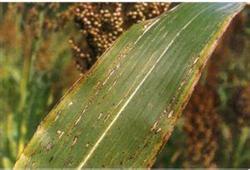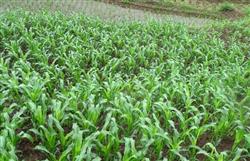What are the nutritional characteristics of sorghum?

What are the nutritional characteristics of sorghum? Please introduce the main utilization parts of sorghum, such as grain, rice bran, stem and so on. Among them, the main nutrient contents in grains are as follows: crude fat 3%, crude protein 8-11%, crude fiber 2-3%, starch 65-70%. 1. The general content of protein grains is 9-11%. There are about 0.28% lysine, 0.11% methionine, 0.18% cystine, 0.10% tryptophan, 0.37% arginine, 0.24% histidine, 1.42% leucine, 0.56% isoleucine, 0.48% phenylalanine, 0.30% threonine and 0.58% valine. The content of leucine and valine in sorghum grain was slightly higher than that in corn, while the content of arginine was slightly lower than that in corn. The content of other amino acids is roughly the same as that of corn. The content of crude protein in sorghum bran is about 10%, 9.3% in fresh sorghum distiller's grains and 8.5% in fresh sorghum vinegar residue. The protein content of sorghum stalk and sorghum shell is about 3.2% and 2.2%, respectively. Sorghum protein is slightly higher than corn, the same poor quality, lack of lysine and tryptophan, protein digestibility is low, because sorghum alcohol-soluble protein has more intermolecular cross-linking, and there is a strong binding bond between protein and starch. Makes it difficult for the enzyme to break down. 2. The fat content is 3%, which is slightly lower than that of corn, and the saturated fatty acids in fatty acids are also slightly higher, so the melting point of fat is also slightly higher. The content of linoleic acid was also slightly lower than that of corn. The content of crude fat in the by-products of sorghum processing is higher. The crude fat content of air-dried sorghum bran is about 9.5%, and that of fresh sorghum bran is about 8.6%. The contents of distiller's grains and vinegar dregs are 4.2% and 0.5% respectively. The content of crude fat in grain is only about 3.6%, and the content in sorghum stalk and sorghum shell is also less. 3. Nitrogen-free extract, including starch and sugar, is not only the main component of feed sorghum, but also the main energy source of livestock and poultry. The content of nitrogen-free extract in feed sorghum varies from 17.4% to 71.2%. There are more crude fiber in sorghum stalk and sorghum shell, and their contents are about 23.8% and 26.4%, respectively. The content of starch is the same as that of corn, but the starch granule of sorghum is covered by protein, so the digestibility of starch is lower than that of corn, and the effective energy value is equivalent to 90-95% of that of corn. Although the nutritional value of sorghum stalk and sorghum shell is lower than that of concentrate, it has more sources and low price, which can reduce the feeding cost. 4. The contents of calcium and phosphorus in minerals and vitamins are similar to those in corn, and about 40-70% of phosphorus is phytic acid phosphorus. The contents of B1 and B6 in vitamins were the same as those in corn, and the contents of pantothenic acid, niacin and biotin were higher than those in corn, but the utilization rate of nicotinic acid and biotin was low. According to the analysis of the Central Institute of Health (1957), every kilogram of sorghum seeds contains thiamine, (vitamin B:) 1.4mg, riboflavin (vitamin B:) 0.7mg, nicotinic acid 6mg. The content of crude protein in sorghum green leaves before maturity is about 13.5%, and the content of riboflavin is also rich. The seeds, stems and leaves of sorghum contain a certain amount of carotene, especially when used as silage or silage. 5. Tannins (tannin) are water-soluble polyphenols, also known as tannic acid or tannic acid. Tannins have a strong bitter taste, which affects palatability, and tannins can combine with proteins and digestive enzymes, affecting the utilization of proteins and amino acids. Feeding tannins to chicks causes joint swelling, similar to other nutrient deficiency of the tibia. Click to get more sorghum planting technology click to get more grain planting technology
- Prev

How is sorghum bacterial streak disease?
What is the bacterial streak of sorghum? Please introduce the symptoms of sorghum bacterial streak, which are mainly harmful to sorghum leaves and leaf sheaths. The disease spot forms a light red to light purplish red stripe along the leaf vein, about 1-3mm wide. A few varieties are yellowish brown, the disease spot is bright, not immersed in water, different from bacterial red stripe disease. The disease spot for a long time.
- Next

How to manage sorghum seedlings?
How to manage sorghum seedlings? Please give guidance to sorghum seedling management can refer to the following methods for management: 1. Chemical weeding: chemical weeding should be carried out 3 days after sowing. Every hectare should be sprayed with 3.5kg atrazine and 400ml 500kg water. In case of dry weather, spray water once within two days and spray wet.
Related
- The first cup of black tea in spring, the flavor and history of tea gardens in Kenya, Africa
- The computer can not only choose potatoes, but also grow tea rice. AI will grow winter oolong tea champion.
- It is not only the inflated tea bitten by insects, but also engraved with the four seasons tea in Beipu.
- The Oriental Beauty Tea Festival in Zhuxian County takes the stage at the weekend to experience the plus-size feast of oil tea.
- & quot; Oriental Beauty Tea & Exploration of Emei in Hsinchu, the hometown of quot;
- The new variety of strawberry "Tainong 1" dessert is the first choice with mellow aroma. Crimson gorgeous
- History of Tea in Taiwan: from Wild Inner Mountain to Export Tea Garden
- Two types of Taiwan Oriental Beauty Black Tea won the British three-Star Award for Childhood Tea Xiang Zhang Jiaqi changed from pilot to champion tea maker.
- Banana species and varieties: the planting history of Taiwan Xianren banana and dwarf banana is long, is banana disease resistant?
- Coffee planting Technology: Qianjie Coffee from Seedling to harvesting

